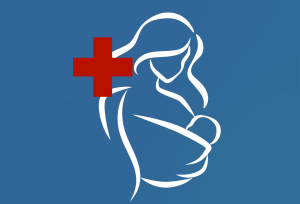I was at a friend’s birthday party. I got a Facebook messenger notification. It was a sticker from my friend, Onyinye.
Oh dear, I haven’t wished Onyii a Happy New Year. Now, she’s beaten me to it. I opened it. It was a crying face. One line above the crying face: Onyinye is dead.
What’s happening here? Onyinye telling me that Onyinye is dead, and with a crying face?
I stepped out of the noise of the party and called Onyii. Her daughter, nine years old, picked the call. Yes, my friend died at childbirth. She has been buried. They did not see me and so she sent me the message. It was the end of the party for me.

Public Health Notes
It was a stress-free pregnancy. She wasn’t a first-timer. Her third. In her prime of life. The delivery was meant to be vaginal, like the two before. With onset of labour, she went to the maternity, like the two before. She started bleeding as she pushed…. The child died with her.
As I write this, I have in front of me the maternal mortality rates of different local government areas in Nigeria, 2021. The Sustainable Development Goal targets to bring it down to 70 per 100,000 live births. A recent survey in Ebonyi state, drawn from 40 health facilities, revealed that in six months, they had recorded 7,014 deaths.
Typically, more deaths occur outside health facilities, and they are not captured. I am in Enugu state. The situation is not as dire, but it is bad enough. Very bad. My friend, Onyii, has joined the statistics. And her grieving 9-year-old daughter reached out to me the best she knows how.
Onyii almost had no option but to go to the maternity. Of the 503 secondary healthcare facilities in Enugu state, practically none is functional. Onyii was living in a sub-urban neighborhood. The facility owner is a retired midwife, quite experienced, but she has her professional limitations. Even seemingly stress-free delivery can suddenly develop complications.
There is no capacity for emergencies, no ambulance, and no next secondary healthcare system to refer to. The tertiary health facility, which is quite functional – is too far for emergency. And so, Onyii passed on, with her child at term.
We are on the verge of elections again. National, and many states. As usual, women are the great cheerleaders. They have all sorts of uniforms, following the politicians up and down, looking for all sorts of laughable favours. Few bother to know what the politicians at all levels understand about maternal mortality, and what they want to do about it. Luckily, any serious political aspirant now already has his/her manifestos. Otherwise, women, please forget that person. Then look at their manifestos.
Anyone, I repeat , ANYONE, that says nothing at all about maternal mortality, infant mortality, under-five mortality and mental health, please and please, it is a NO! NO!! There is no single exception. Politicians do not keep to what they say, and what they do not say WILL NEVER BE CONSIDERED.
It is not just the banal ‘I will improve healthcare delivery’. No, they must be specific in details of why and how. Those indices are very important. It shows deep thinking in healthcare delivery.
If we had been doing this all along, perhaps Onyii would not have died…
Onyii, rest in peace, my dear friend.


